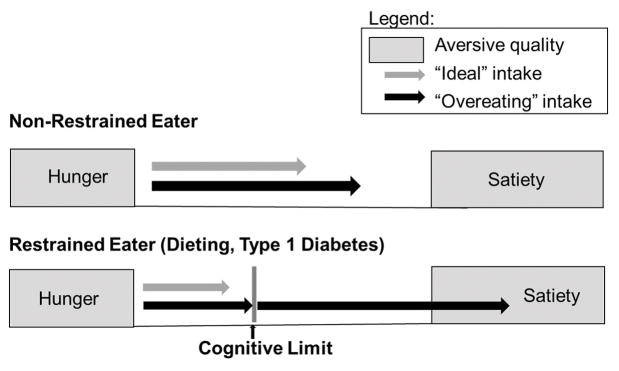FIGURE 1.
Schema of the two types of eaters outlined by cognitive restraint theory: the non-restrained eater and the restrained eater. In the non-restrained eater (top), eating is initiated by the aversive quality of hunger and is terminated by the aversive quality of hunger. Within the bracket of hunger and satiety, there is a zone of relative ‘biological indifference,’ where eating is driven by external and psychological factors. In the restrained eaters (bottom), such as individuals who are dieters or who have Type 1 diabetes, there are several key differences: 1) hunger and satiety signalling is disrupted where satiety thresholds are increased; 2) there is a cognitive dietary boundary (either self-imposed or medically imposed). When this diet boundary is exceeded by a ‘preload’ of food or another dietary disinhibition, restrained eaters continue to eat until they reach satiety (which is higher than that of a normal eater). When this boundary is removed (in hypoglycaemia for example, or using the flexible closed-loop systems), they may similarly overeat. Grey arrows represent typical ‘ideal’ food intake and black arrows represent typical food intake in episodes of ‘overeating.’

